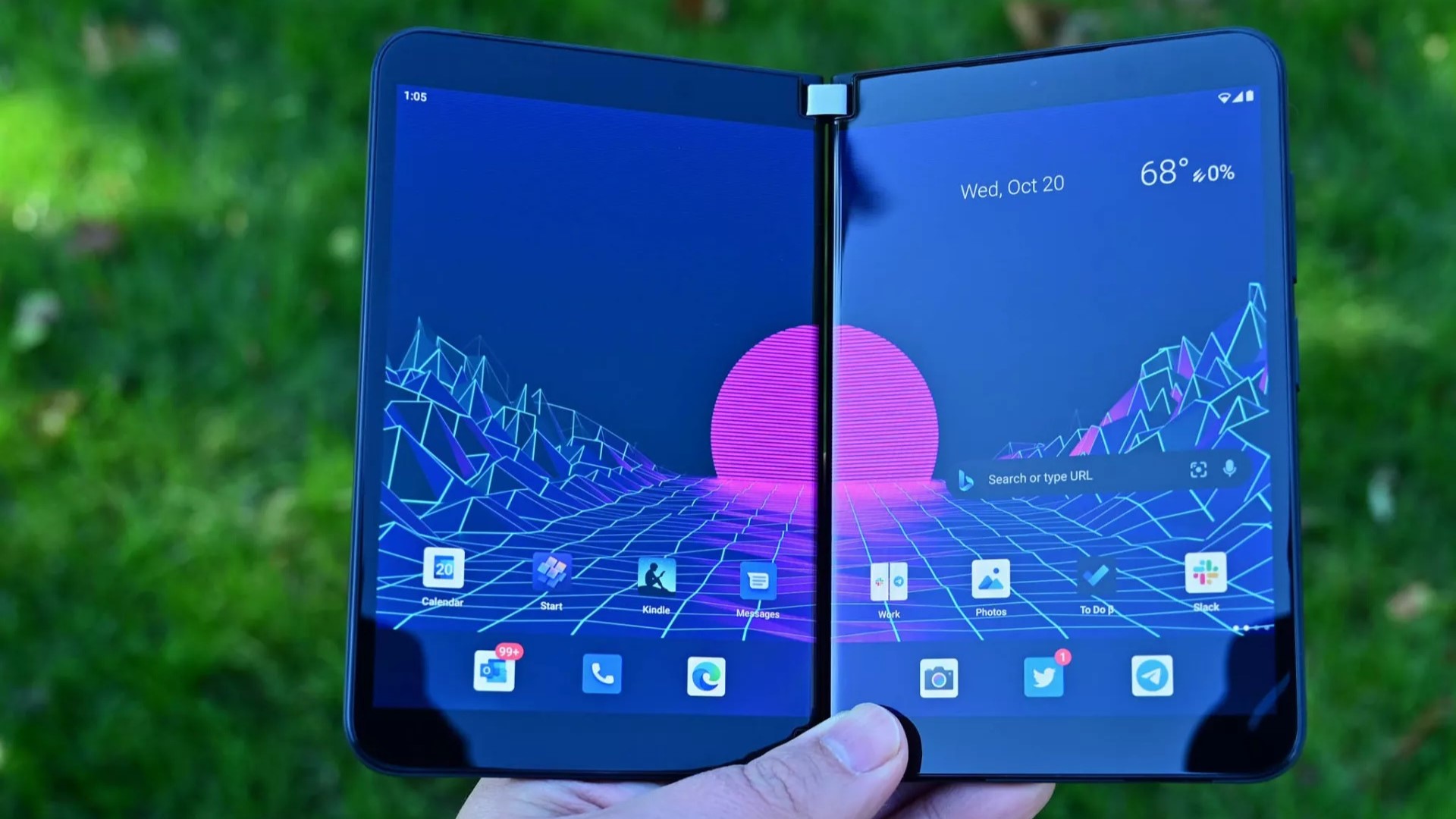Does Samsung’s Galaxy Z Fold 4 dethrone the Surface Duo’s dual-screen multitasking?
The answer is no, but does it even matter?

Samsung has unveiled its latest generation Galaxy Z Fold device, an iterative upgrade over last year's model, with a slightly wider aspect ratio, flatter and shinier edges, plus better cameras on the back. Samsung is continuing to push foldables to a more mainstream market, but with a starting price of $1,799, it’s still awfully expensive, even more so than the Surface Duo 2 at launch.
I’ve always been fascinated by the people that actively compare the Galaxy Z Fold to the Surface Duo. I can see why, both are firmly under the “foldables” category, but I’ve never considered the Surface Duo a foldable tablet like the Galaxy Z Fold. The Surface Duo is a dual-screen phone with two large phone displays. The Galaxy Z Fold is an Android tablet with a large tablet-sized single-screen display that can fold in half to fit in your pocket.
Both have their advantages and disadvantages, but the similarities between the two ultimately come down to more screen space in your pocket. The biggest difference between the two is that one handles multitasking far better than the other, with the Surface Duo handling multitasking automatically and the Galaxy Z Fold requiring user input to initiate multitasking functionality.
But with the Galaxy Z Fold 4, Samsung prioritizes multitasking a little more. I’ve always preferred the Surface Duo over the Galaxy Z Fold due to the Duo’s multitasking and gesture experience, outpacing what's available with the Galaxy Z Fold series. But the Galaxy Z Fold 4 introduces a new Taskbar UX, thanks to the new Android 12L, that encourages multitasking in everyday use.

It's still not an automatic process, however. On Surface Duo, multitasking happens automatically. You don’t think about it or initiate a special mode to access it; the OS handles both screens intelligently and presents apps in a multitasking manner. On the Galaxy Z Fold 4, the user still needs to manually drag and drop apps into regions on the screen to run two (or more) apps side by side, but it’s certainly a step forward compared to the old experience.
But the Galaxy Z Fold 4 is still a single-screen tablet, so even in multitasking mode, you don’t get access to a second phone screen to do other things with. The beauty of Surface Duo is that it treats each display as a single phone which you can throw things between. When an app opens on one screen, the other screen remains open for you to initiate a second app, browse your home screen, open the notification shade, and do everything else you’d normally do on a phone without obscuring the other app.
Galaxy Z Fold 4 doesn’t allow you to use one half of the display as its own phone screen. You must open an app first, which takes you away from the home screen, then you use the Taskbar to open a second app. Things like opening the notification shade or going to your home screen will obscure your entire running screen. As a result, multitasking on the Galaxy Z Fold 4 is still a cognitive process which requires thought, unlike the Surface Duo.
All the latest news, reviews, and guides for Windows and Xbox diehards.

The Galaxy Z Fold 4 also defaults to opening new apps on top of the current one, and not shifting them side by side, which often makes the Galaxy Fold feel more cramped as a result. Plus, even when running apps side by side, the narrow aspect ratio on the Galaxy Z Fold 4 in portrait mode doesn’t make for an enjoyable experience, versus the Surface Duo.
So, does the Galaxy Z Fold 4 dethrone the Surface Duo in the multitasking department? I don’t think so. Surface Duo’s multitasking is still magic and is a UX that’s only really possible when you embrace having a physical gap down the middle of your displays. But does it even matter? Does the market yearn for a phone that’s good at multitasking?
I think the allure of having a phone that prioritizes multitasking isn’t as strong as having a single, continuous foldable display for most people. I suspect that no matter how good the Surface Duo is at multitasking, when presented with the choice, most people would prefer the Galaxy Z Fold without a divide down the middle.
Because of this, I wouldn't be surprised if the next Surface Duo abandons the dual-screen form factor in favor of a single-screen foldable like what Vivo, Xiaomi, and indeed Samsung, are putting out today. I just hope the company can keep some of that multitasking magic if they adopt the single-screen foldable form, popularized by the Z Fold lineup.


